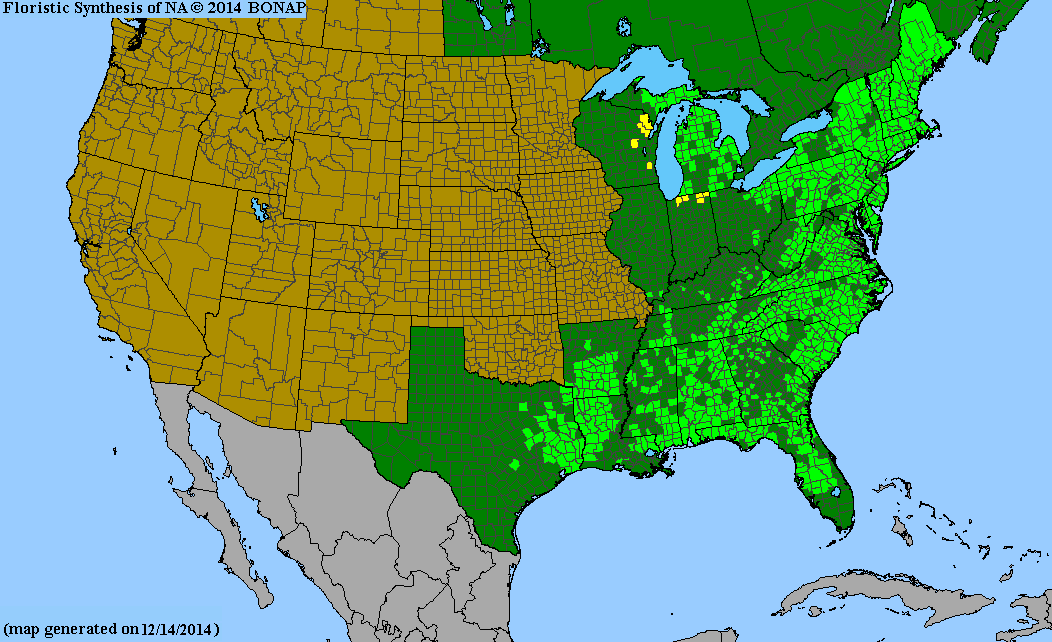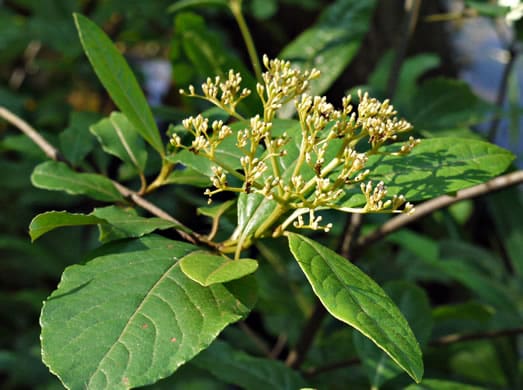Viburnaceae
Possumhaw viburnum
Viburnum nudum
Synonyms
Viburnum cassinoides, Viburnum nitidum
Other Common Names
southern wild raisin, smooth witherod
Plant Type
Shrub (less than 10 ft)
Life Cycle
Perennial
Typical Size
5-12 ft. tall
5-12 ft. wide
Inolerant of
Dry Soil
Propagation
By seed, By cutting
Plant Propagation Notes
Hardwood and softwood cuttings can be used for propagation.
Plant Planting Notes
A multi-stemmed shrub requiring up to 12′ spacing.
Plants/Diseases
No significant disease or pest issues.
Wildlife Benefits
Nectar/pollen source for pollinating insects, Host plant for butterfly larvae, Fruit/seeds for birds
Leaves
Opposite, simple leaves with entire margins. Leaf blades elliptical to oblong.
Flowers
Small saucer-shaped flowers with 4-5 petals in clusters arranged in a cyme.
Fruit
Drupes form in fall and exhibit a contrast of pink and blue-black coloration.
Bark
Smooth gray-brown with warty lenticels.
Toxicity
No known toxicity.
Edibility
Fruits are acidic, but edible.

USDA Hardiness Zones
5, 6, 7, 8, 9
Light Exposure
Full Sun, Part Sun/Shade
Soil Moisture
Moist
Soil Drainage
Well-drained
Soil pH
Acidic (less than 6.0)
Native in South Carolina?
Yes
Plant Native Habitat
Found in bogs, floodplains, swamps, pond margins, and wooded seeps.
Global Conservation Status (NatureServe)
Secure (G5)
Federal Conservation Status (USFWS)
Not Listed
Distribution Notes
Common in the Coastal, Sandhill, and Piedmont regions. Rare in the Mountains.



